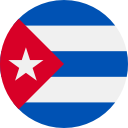Education plays a significant role in the economic, social, and political development a country. A country that can’t manage to sustain the education of its citizens by employing competent teachers as well as offering well-equipped infrastructure is a failed state.
Worth Knowing – Sis Loves Me
Sis Loves Me is well known series in Latin American countries. The fantasy is worldwide, but it has a special place in hearts here. Launched back in 2016 and with over 200 updates in 2019 this series is the golden standard in the genre. It features world’s craziest situations with the sexiest step sisters ever.
Commonly, countries encourage the existence of organizations that stress the importance of education for their citizens by offering them incentives. The following are the eight most educated Latina American Countries:
Cuba
 Education is highly esteemed in Cuba. This is evident from the numerous investments the country has put in place to facilitate this process of learning. Cuba hosts approximately 7100 high education students for every 100,000 people. The culture of highly-regarding education emanated from the leadership of Fidel Castro when he became the country’s prime minister in 1959.
Education is highly esteemed in Cuba. This is evident from the numerous investments the country has put in place to facilitate this process of learning. Cuba hosts approximately 7100 high education students for every 100,000 people. The culture of highly-regarding education emanated from the leadership of Fidel Castro when he became the country’s prime minister in 1959.
By 1980s and 1990s, Cuba’s educational disbursements had significantly grown subsequently ranking the country high in the entire globe. Cuba has declared school attendance compulsory for ages between 6 and 15 or 16. In addition, every student is required to put on school uniform with a color exhibiting his or her grade level.
Grenada
 With education shaped on the British system, Grenada has continuously embraced leaning for its inhabitants from a tender age. Grenada has made it compulsory for its citizens aged between 6 and 14 to access education.
With education shaped on the British system, Grenada has continuously embraced leaning for its inhabitants from a tender age. Grenada has made it compulsory for its citizens aged between 6 and 14 to access education.
The various levels of education offered by this country include primary education, middle education, secondary education, vocational education, and tertiary education. The teachers mandated to offer educational services in Grenada usually undergo training at the T.A Marryshow Community College via the University of the West Indies Teacher Education. Grenada has 6600 high education students for every 100,000 people.
Argentina
 Argentina enjoys a good reputation globally as a result of its excellent school system. This country boasts a high literacy level among the entire Latin American countries. It hosts 6100 high education students for every 100,000 people.
Argentina enjoys a good reputation globally as a result of its excellent school system. This country boasts a high literacy level among the entire Latin American countries. It hosts 6100 high education students for every 100,000 people.
Argentina has organized its school system to commence at the pre-primary level. The kindergarten level featuring children aged between two and five isn’t compulsory.
However, the primary schooling, which starts at the age of six, is compulsory for everyone.
Chile
 Chile’s education level includes preschool level, primary school level, secondary school level, technical or higher education level. Both primary and secondary school levels are compulsory for everyone. Higher education in Chile is provided by universities, professional institutes and technical schooling centers.
Chile’s education level includes preschool level, primary school level, secondary school level, technical or higher education level. Both primary and secondary school levels are compulsory for everyone. Higher education in Chile is provided by universities, professional institutes and technical schooling centers.
The country hosts 59 universities, which students can choose to enroll in. The number of high education students in Chile is 5200 per 100,000 people.
Barbados

Characterized by an education system based on the British model, Barbados enjoys a high literacy level above 98%.
The state emphasizes on learning for children beginning at the age of 4 and offers a common entrance examination to enable students to qualify for secondary school level.
The number of high education students in this country is 4900 per 100,000 people.
Peru

Peru offers a compulsory and free education for its students in public schools for both primary and secondary levels. The country also considers the excellent academic performers who are incapable of funding their university education by offering them free education in public universities. The Ministry of Education is in charge of Peru’s education. It formulates, implements and supervises the national education policy.Early education in the country begins from age six. Peru hosts 4100 high education students for every 100,000 people. Students undertaking the non-university education in Peru can qualify for professional technical education degrees, superior degree, middle degree and elementary degree.
Panama
 Things have changed for Panama having been described in the past as having the worst form of education. Today, Panama is among the top countries in Latin America that relishes the best education.
Things have changed for Panama having been described in the past as having the worst form of education. Today, Panama is among the top countries in Latin America that relishes the best education.
Panama has made it compulsory for its citizens to access primary education that runs for seven years. Middle school education runs for three years. This has significantly contributed to the 90% literacy level for the country. Panama features approximately 4000 high education students for every 100,000 people.
Ecuador

Ecuador ranks high in education based on its large number of high education students for every 100,000 people (3900). It is characterized by a 6-3-3-3 formal education structure. Children are supposed to enroll in primary schools at the age of six. For secondary education, students go through lower and upper secondary education. Lower secondary education comprises of grades 7 to 9 while upper secondary education comprises of grades 10 to 12. The university enrolment rate for university education is 14% making this country a hub for higher learning.





